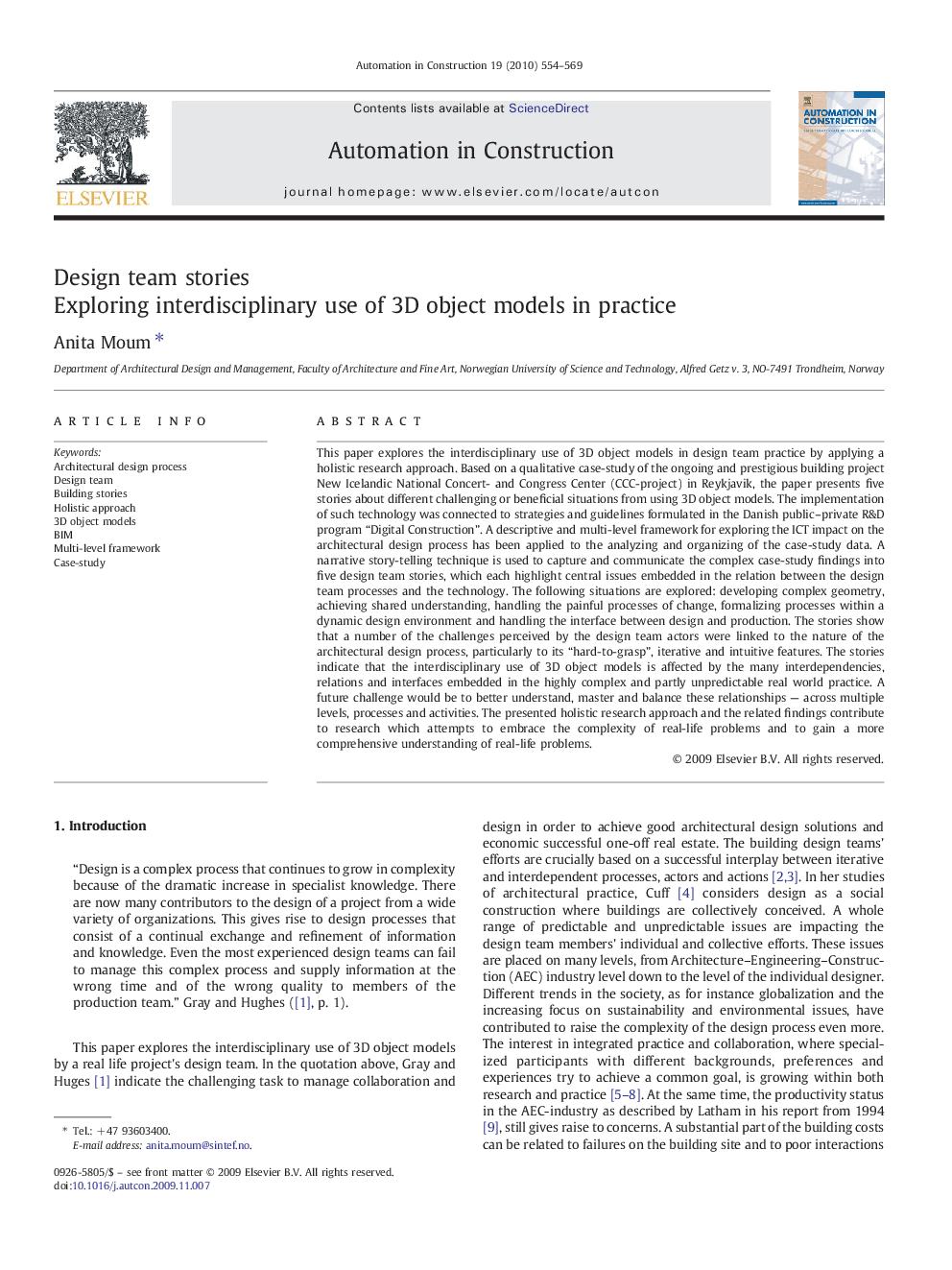| Article ID | Journal | Published Year | Pages | File Type |
|---|---|---|---|---|
| 247166 | Automation in Construction | 2010 | 16 Pages |
This paper explores the interdisciplinary use of 3D object models in design team practice by applying a holistic research approach. Based on a qualitative case-study of the ongoing and prestigious building project New Icelandic National Concert- and Congress Center (CCC-project) in Reykjavik, the paper presents five stories about different challenging or beneficial situations from using 3D object models. The implementation of such technology was connected to strategies and guidelines formulated in the Danish public–private R&D program “Digital Construction”. A descriptive and multi-level framework for exploring the ICT impact on the architectural design process has been applied to the analyzing and organizing of the case-study data. A narrative story-telling technique is used to capture and communicate the complex case-study findings into five design team stories, which each highlight central issues embedded in the relation between the design team processes and the technology. The following situations are explored: developing complex geometry, achieving shared understanding, handling the painful processes of change, formalizing processes within a dynamic design environment and handling the interface between design and production. The stories show that a number of the challenges perceived by the design team actors were linked to the nature of the architectural design process, particularly to its “hard-to-grasp”, iterative and intuitive features. The stories indicate that the interdisciplinary use of 3D object models is affected by the many interdependencies, relations and interfaces embedded in the highly complex and partly unpredictable real world practice. A future challenge would be to better understand, master and balance these relationships — across multiple levels, processes and activities. The presented holistic research approach and the related findings contribute to research which attempts to embrace the complexity of real-life problems and to gain a more comprehensive understanding of real-life problems.
